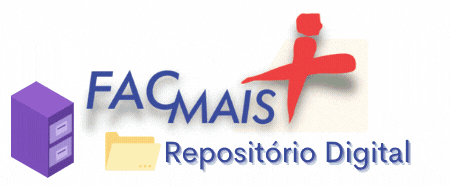Use este identificador para citar ou linkar para este item:
http://65.108.49.104:80/xmlui/handle/123456789/671Registro completo de metadados
| Campo DC | Valor | Idioma |
|---|---|---|
| dc.creator | CHAVES, Cinara Miranda | - |
| dc.date.accessioned | 2023-04-10T18:50:08Z | - |
| dc.date.available | 2023-02-17 | - |
| dc.date.available | 2023-04-10T18:50:08Z | - |
| dc.date.issued | 2023-02-17 | - |
| dc.identifier.uri | http://65.108.49.104:80/xmlui/handle/123456789/671 | - |
| dc.description.abstract | The present dissertation analyzed the impacts of the pandemic in the context of the teaching-learning relationship in a high school, in the city of Anápolis, Goiás. It was developed within the Education, Institutions and Educational Policies research line. The axis for understanding this problem is social and digital inclusion. The objective was to investigate the actions promoted by the investigated educational institution during the pandemic, in the context of remote classes, and in the return to face-to-face classes. The time frame refers to the years 2020 and 2021. To achieve this goal, the methodology used was bibliographic research and document analysis, which allows the observation of the actions of the State Department of Education (Orientation), the National Education Council and the State Education Council (Resolutions and opinions) and the school, especially the Political Pedagogical Projects of 2020 and 2021. As a theoretical foundation, this research is based on the reflections of Libâneo (2012), Freire (1980; 1966), Foucault (1987), among others. Thus, we sought to analyze the concepts of exclusion and inclusion until we arrived at the discussion about exclusion and digital inclusion. The process of normative construction that regulated remote education both in Brazil and in Goiás was also addressed. To this end, guiding documents sent by the Regional Education Coordination to the state schools were analyzed. Finally, the discussion around the documents was deepened, contemplating the ways in which the institution used the guidelines. According to the analysis of the documents and other data collected from the educational institution, it was clear that, although the No-Presence Classroom Scheme is an attempt to ensure the right to education, this format failed to meet the real demands of student learning. | pt_BR |
| dc.language | por | pt_BR |
| dc.publisher | Faculdade Facmais | pt_BR |
| dc.rights | Acesso Aberto | pt_BR |
| dc.subject | Aprendizagem | pt_BR |
| dc.subject | Ensino Médio | pt_BR |
| dc.subject | Inclusão digital | pt_BR |
| dc.title | INCLUSÃO SOCIAL E DIGITAL E A APRENDIZAGEM ESCOLAR DE ALUNOS DE ENSINO MÉDIO DE UMA ESCOLA ESTADUAL EM ANÁPOLIS FRENTE AO CONTEXTO PANDÊMICO (2020-2021) | pt_BR |
| dc.type | Dissertação | pt_BR |
| dc.creator.Lattes | http://lattes.cnpq.br | pt_BR |
| dc.contributor.advisor1 | PURIFICAÇÃO, Marcelo Máximo | - |
| dc.contributor.advisor1Lattes | http://lattes.cnpq.br | pt_BR |
| dc.description.resumo | A presente dissertação analisou os impactos da pandemia no contexto da relação ensino-aprendizagem em um colégio de Ensino Médio, na cidade de Anápolis, Goiás. Foi desenvolvida no interior da linha de pesquisa Educação, Instituições e Políticas Educacionais. O eixo para compreender esse problema é a inclusão social e digital. O objetivo foi o de investigar as ações promovidas pela instituição de ensino investigada durante a pandemia, no contexto de aulas remotas, e no retorno às aulas presenciais. O recorte temporal refere-se aos anos de 2020 e 2021. Para alcançar esse objetivo, empregou-se como metodologia a pesquisa bibliográfica e a análise documental, a qual permite observar as ações da Secretaria do Estado da Educação (Orientação), do Conselho Nacional de Educação e Conselho Estadual de Educação (Resoluções e pareceres) e da escola, em especial os Projetos Políticos Pedagógicos de 2020 e 2021. Como fundamentação teórica, esta pesquisa ampara-se nas reflexões de Libâneo (2012), Freire (1980; 1966), Foucault (1987), dentre outros. Assim, procurou-se analisar os conceitos de exclusão e inclusão até se chegar na discussão sobre exclusão e a inclusão digital. Foi abordado, ainda, o processo de construção normativa que regulamentou o ensino remoto tanto no Brasil quanto em Goiás. Para tanto, foram analisados documentos orientadores encaminhados pela Coordenação Regional de Educação para os colégios estaduais. Por fim, aprofundou-se a discussão em torno dos documentos, contemplando as formas como a instituição utilizou as orientações. De acordo com a análise dos documentos e de demais dados coletados junto à instituição de ensino, ficou claro que, por mais que o Regime de Aulas Não Presencias seja uma tentativa de garantir o direito à educação, esse formato não conseguiu atender às demandas reais de aprendizagem dos alunos. | pt_BR |
| dc.publisher.country | Brasil | pt_BR |
| dc.publisher.department | Departamento 1 | pt_BR |
| dc.publisher.program | PPG1 | pt_BR |
| dc.publisher.initials | FACMAIS | pt_BR |
| dc.subject.cnpq | CNPQ::CIENCIAS HUMANAS::EDUCACAO | pt_BR |
| Aparece nas coleções: | Dissertações do Mestrado | |
Arquivos associados a este item:
| Arquivo | Descrição | Tamanho | Formato | |
|---|---|---|---|---|
| dissertação cinara.pdf | 1.4 MB | Adobe PDF | Visualizar/Abrir |
Os itens no repositório estão protegidos por copyright, com todos os direitos reservados, salvo quando é indicado o contrário.
